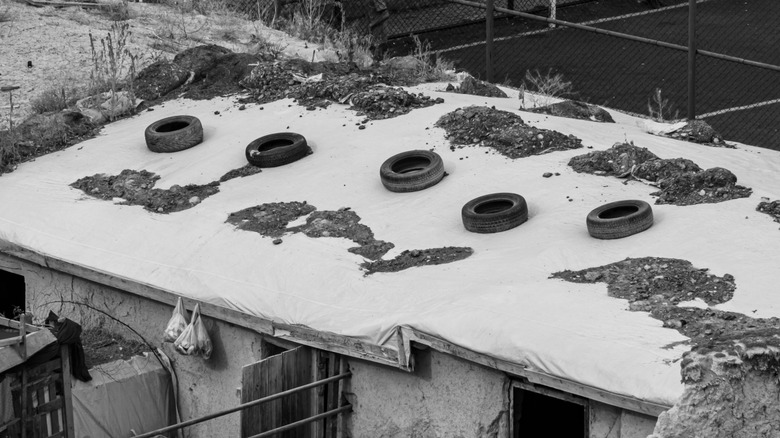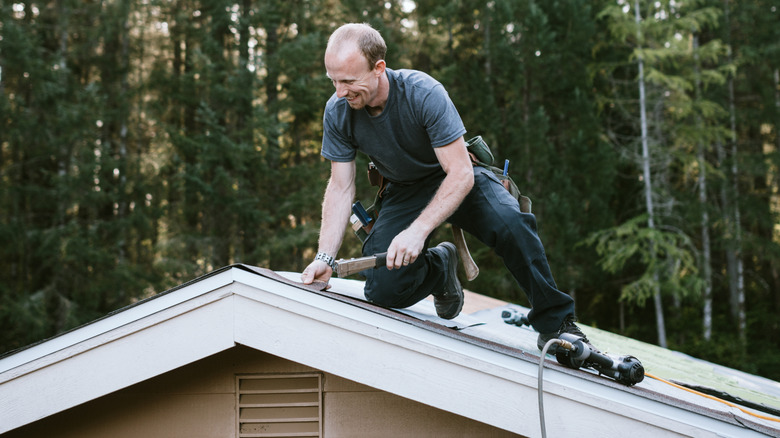Here's Why You'll See People Put Tires On Their Roof Sometimes
Tires on roofs are a common sight in areas with strong winds and metal roofing. While this might seem confusing, there is a good reason for it. Homeowners use the tires as an inexpensive fix to keep their roofs stable and in place. This method serves as a practical solution to various problems caused by lightweight building materials in areas with severe weather.
An estimated 20 million Americans occupy mobile homes, most of them in low-income Southern communities that experience frequent tornadoes and thunderstorms. Corrugated metal roofing is widely used for these homes, but it's often installed without proper reinforcement due to cost or material limitations. With formal anchoring or construction support well out of reach, communities had to find a different solution or risk having their roofs blown off.
While some used big rocks, most residents relied on repurposing old vehicle tires instead due to their availability; retrieving them from nearby junkyards, garages, or the side of the road. Despite not being an industry-standard practice, it's a workaround rooted in necessity and adapted to harsh climates.
How tires work so well as roof anchors
What makes the practice so widespread is how easily tires can be set up without specialized power tools or construction skills. The shape and flexibility of tires make them easy to position securely on roofs, even on warped or uneven panels, without slipping off. Since the rubber is heavy but still soft, it applies enough downward pressure to keep the roof secure without puncturing or damaging its surface.
This non-invasive quality makes tires especially good for stabilizing the ridged metal sheets that most homes use for their roofing, which might otherwise rattle loudly during storms, shift, or even tear off completely if left unanchored. Once placed, most homeowners leave them on their roofs year-round with minimal need for maintenance or upkeep, making tires a long-term solution against weather damage in homes that may otherwise lack integrity in their roofs.
That said, this practice doesn't come without downsides. Rainwater can collect inside the tires, creating pools of standing water that attract mosquitos and other pests. To avoid this, many residents simply drill holes into the rubber to allow the water to drain out. According to a Reddit commenter, the water can also be used as a trap by adding mosquito dunks to stop local mosquitoes and gnats from breeding. While hurricane straps remain the gold standard for anchoring and stability, tires still serve as a functional and budget-friendly response to severe weather. They may not be pretty, but they work.

